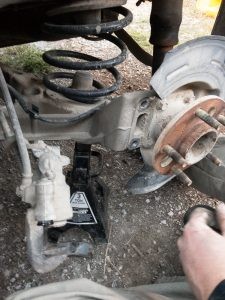Car repairs are an unwelcome expense for any vehicle owner. While essential for maintaining your car’s reliability and safety on the road, unexpected repair costs can put a significant strain on your finances, especially when you’re already on a budget. It’s a situation many drivers face: what do you do when your car needs fixing, but you simply can’t afford car repair right now?
Fortunately, facing an unaffordable car repair bill doesn’t mean you’re stuck. There are several paths you can explore to get your car back in working order without breaking the bank. Let’s delve into some actionable solutions.
1. Have an Open Conversation with Your Mechanic
The first and most crucial step is to communicate clearly with your mechanic. Don’t hesitate to ask for a detailed explanation of the problem and the proposed repair. Inquire about different repair options – are there alternative, potentially less expensive fixes?
This discussion is also your opportunity to understand the urgency of the repair. Is it something that needs immediate attention, or is it a problem you can address later without risking further damage or safety? For example, while a malfunctioning catalytic converter will cause you to fail emissions tests and impact fuel efficiency, it might not immediately prevent you from driving. Understanding the timeline can buy you crucial time to explore financial solutions.
Furthermore, it’s always worth asking about potential discounts. Many reputable mechanics offer discounts to AAA members, seniors, military personnel, or even have seasonal promotions. Simply asking “Are there any discounts available?” could lead to unexpected savings and make the repair bill more manageable.
2. Seek a Second Diagnostic Opinion
If you’re uncertain about the initial diagnosis or if the repair estimate feels excessively high, getting a second opinion is a wise move. While it might incur an additional diagnostic fee, it can provide peace of mind and potentially uncover a more cost-effective solution.
Sometimes, complex car issues can present with overlapping symptoms. For instance, a seemingly obvious oxygen sensor issue flagged by your check engine light might actually stem from a vacuum leak. In such cases, blindly replacing the oxygen sensor wouldn’t resolve the root problem.
Consulting another mechanic, especially one specializing in your car’s make, can help pinpoint the precise issue. However, be mindful of the added cost of a second diagnostic and ensure the potential benefits outweigh the expense.
3. Explore the Option of Used Car Parts
One of the most effective ways to reduce car repair expenses is by opting for used car parts. New parts come with a premium price tag, while quality used parts can offer substantial savings without compromising functionality.
If your regular mechanic is hesitant to use used parts, seek out a shop that is open to it. Even better, consider sourcing the parts yourself from auto salvage yards like Tear-A-Part. By pulling the parts yourself, you can significantly cut down on costs.
Keep in mind that using customer-supplied parts might affect the mechanic’s warranty on their labor. Discuss this aspect with your mechanic to understand the implications and make an informed decision.
4. Investigate Your Warranty Coverage
Before you assume you’re fully responsible for the repair costs, double-check if your vehicle is still under warranty. If you purchased an extended warranty, now is the time to review its terms and conditions.
Warranties often have intricate details and exclusions, so carefully examine the fine print. However, a quick phone call to your warranty provider can clarify whether your specific repair is covered, either partially or fully.
While there’s no guarantee of coverage, the potential savings are significant, making it a worthwhile step to investigate. The worst-case scenario is a “no,” but the best case could mean substantial financial relief.
5. Consider DIY Car Repair (If You’re Equipped)
 Man working on car engine
Man working on car engine
If you possess mechanical aptitude, have access to tools and workspace, and are comfortable tackling hands-on projects, DIY car repair can be a game-changer for affordability. By eliminating labor costs and avoiding parts markups, you can drastically reduce repair expenses.
The internet is a treasure trove of resources for DIY car repair. Platforms like YouTube host countless step-by-step tutorials that guide you through various repair procedures. Watch a few videos related to your specific repair to gauge if it’s a task you feel confident undertaking.
However, be realistic about your skills and the complexity of the repair. Some repairs require specialized knowledge or equipment, and attempting them without proper expertise could lead to further damage or safety hazards. DIY is best suited for simpler repairs and maintenance tasks.
6. Explore Payment Plans and Financing Options
For larger, unavoidable repair bills, inquire with your mechanic about payment plans or financing options. Many auto repair shops understand the financial strain of unexpected repairs and offer payment arrangements to ease the burden.
Spreading out payments over a few months can make a significant difference compared to paying the entire sum upfront. Compare the terms offered by your mechanic with other financing options, such as credit cards, to determine the most favorable solution. Often, financing directly through a local mechanic can be more advantageous than high-interest credit card charges.
7. Evaluate Selling Your Car
When repair costs become excessively high, and you’ve exhausted other options, it’s time for a serious evaluation: is it time to part ways with your car?
If the car is otherwise in decent condition except for the current repair, you could consider selling it privately or trading it in. Full transparency with potential buyers is crucial – honesty avoids future complications and maintains ethical selling practices.
For older, less valuable vehicles, the repair costs might outweigh the car’s worth. In such cases, selling your car to a junkyard could be the most practical solution. Junkyards often offer cash for cars, even those that are not running, providing you with some funds to put towards a replacement vehicle.
This option is particularly appealing if you’re tired of constant repairs on an aging car and are ready for a more reliable vehicle.
Tear-A-Part: Your Partner in Affordable Car Solutions
Whether you’re seeking budget-friendly used car parts to get your vehicle running again or considering selling your car for cash to move on, Tear-A-Part is here to assist you. We simplify the car selling process and offer competitive prices for vehicles in any condition. Even if your car isn’t currently running, reach out to us today to discover how we can help you navigate your car repair challenges.
This article is related to topics such as: auto recycle near me, auto recyclers, auto recycling, auto recycling and junk cars, auto recycling center, buy junk cars, buy my junk car, junk a car without title, junk my car no title, money for my car, recycle my car, salvage my car near me, sell junk car, sell junk car without title, sell junk cars.

